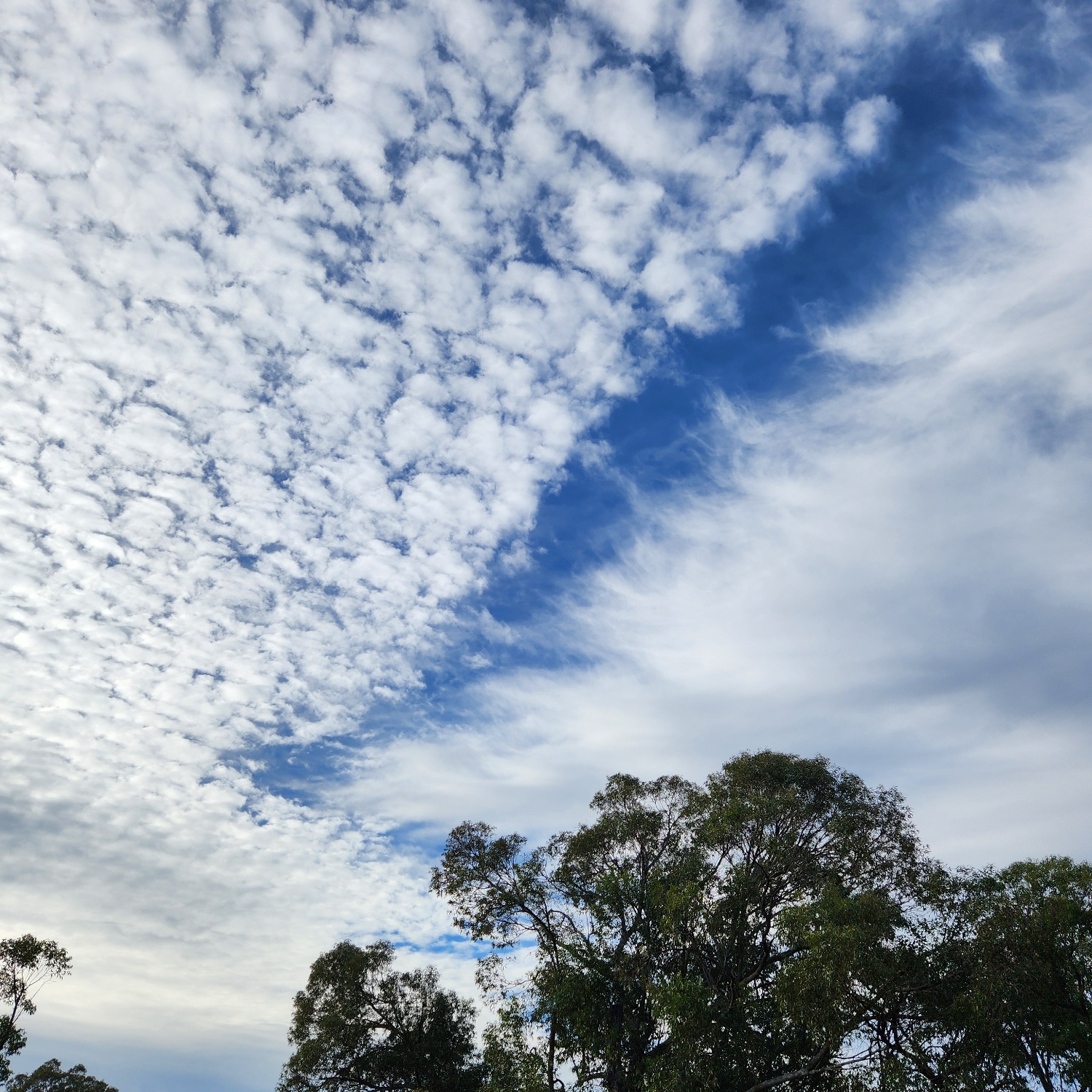On a still, dry morning in Perth, Australia, Philip Partington (Member 57,411) noticed these Altocumulus perlucidus clouds and wondered if they signalled the region’s typically swift transition from summer to winter.
The clouds do signify moisture up at the mid-level of the troposphere. The elongated gap, known as a cavum, was likely caused by an aircraft passing through at a shallow angle, encouraging the clouds’ droplets to freeze and fall below in streaks.
But within minutes, Philip told us, the seasonal indecision was over, and the clouds dissipated away to leave clear skies once again. European colonisers brought the notion of four seasons to Australia. The Noongar people, the First Nations group of the Perth region, recognise six distinct seasons. Maybe, Philip wondered, the Altocumulus were heralding not a transition from summer to winter but one from the hot, dry season of Bunuru to the season of Djeran, when the days stay hot, but the nights become cooler, and the first light rains might begin? The Noongar people have, after all, been cloudspotting in the region for 45,000 years.



